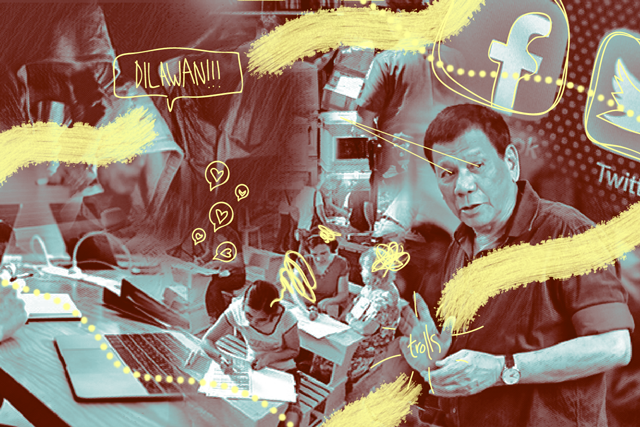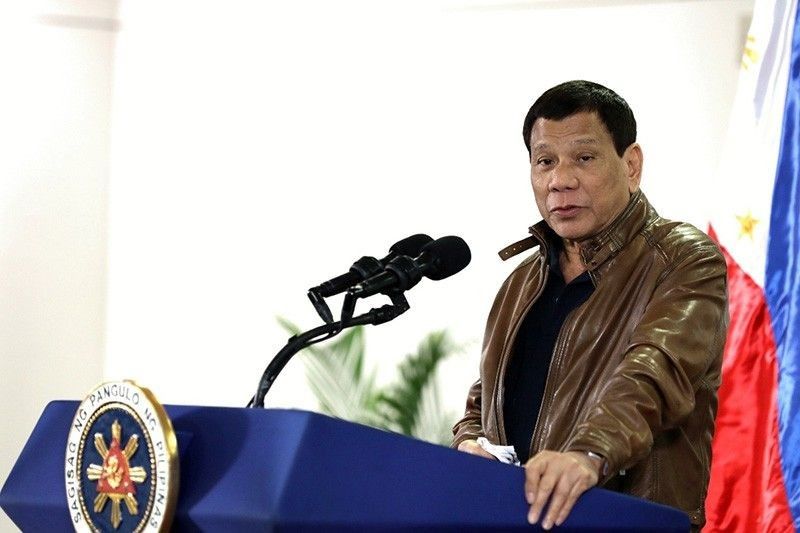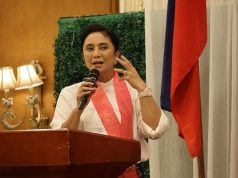
Troll and fake accounts continue to pervade the Philippine social media landscape with the objective to spread disinformation and defend public figures notably months before the upcoming 2019 elections.
In the recent months, dubious accounts with little to no followers were spotted in both Instagram and Twitter following Facebook’s crackdown on spam accounts and questionable pages.
READ: Political pages with millions of followers purged on Facebook
The accounts post pictures of political figures and their supposed projects, as well as seemingly empty phrases of admiration.
In addition, they also spew vitriol-filled comments on other people’s accounts—similar to a move employed by previous accounts created for spreading political propaganda.
The Marcoses
One Facebook user, for instance, noted how her Instagram followers have increased dramatically. All of them share similar content on the supposed achievements and projects of the current Marcos family.
The user observed that the accounts who followed her had a following of more than 3,000; has less than 200 posts and follow a lot of accounts in return.
Upon inspection at their profiles, she noticed that most of them had similar pictures with more or less similar captions as well.
Other Facebook users commented that they have also encountered such followers on Instagram.
Incumbent Ilocos Norte governor Imee Marcos announced that she is running for the Senate while Ilocos Norte’s Second District Representative Imelda Marcos is eyeing the governor position.
Meanwhile, her grandson Ilocos Norte Board Member Matthew Marcos Manotoc will run for the vice-governor position.
Grace Poe
Senator Grace Poe has also been accused of allegedly hiring troll accounts to boost her online leverage for the recent months.
A Twitter account critical of the administration noticed several users on the microblogging platform praising the senator in light of the Dalian trains’ installment. Most of them have little to no followers and have only joined recently.
Hello @SenGracePOE , batiin nyo naman po yung troll army niyo. Moral support ba. Ahihihi… Yung invitation po namin na muli kayong pipila sa MRT at makasakay sa GUMAGANA NAMAN PALANG DALIAN TRAINS, sa magkaroon kayo ng time. Pam-PR po uli. 😊😊😊 #Halalan2019 #NoToPOE pic.twitter.com/uEqCmK6AxF
— GovPH 🇵🇭 (@AltGovPH) November 3, 2018
Poe heads the Senate Committee on Public Services tasked to handle matters on public services and utilities, including means of transportation.
Another Twitter user observed that Poe might have managed to maintain her top spot in the Pulse Asia senatorial preference survey on the first months of this year through her online following.
She is eligible to run as a senator on her second term next year.
Question: is Mabanta Poe’s social media director?
Question: could this explain the Gremlin-like multiplication of Poe trolls?
Question: when I saw this, why did I go, “Eww?” pic.twitter.com/iCB5gt71hV
— Miss Maggie (@MiaMagdalena) November 2, 2018
There were also similar reports of the senator’s alleged trolls from other users.
Hala, mukhang, bababa na ang unemployment. Hiring ngayon ang mga politiko: mga tagadepensa nila sa social media. Lesson ito sa mga anti-Duterte. Ang ibang mga kandidato nga ay nagbabayad ng tagadepensa nila sa social media pero busy kayo sa paninira sa mga opposition candidate. pic.twitter.com/fZZaEOZ1PB
— Miyako Izabel (@sejoalzir) October 30, 2018
Disinformation in the 2016 elections
The National Endowment of Democracy defines disinformation as the act of purposefully spreading false information to explicitly “engender public cynicism, uncertainty, apathy, distrust, and paranoia,” most often through politically motivated messages.
The rise of “fake news” and the proliferation of disinformation on the Philippine social media landscape has its roots in the 2016 elections where aspiring public officials leveraged their marketability by online followings and sensationalized articles.
President Rodrigo Duterte, for instance, has been discovered to have hired a troll army to spread political propaganda against his critics and opponents.
A previous report noted that “Duterte’s team of 400 to 500 cyber troops post nationalistic and pro-government comments and interact with dissenters through harassment and individual targeting” at the amount of $10,000 or P10 million.

Fake accounts were “often used to flood social media networks with spam and fake news.”
These were eventually traced to various pro-Duterte pages on Facebook that share sensationalized or false articles that aim to boost Duterte’s public persona, especially during the 2016 presidential elections.
The pages also spread malicious reports that victimize opposition figures such as Vice President Leni Robredo, Magdalo party-list Representative Gary Alejano and Senator Antonio Trillanes IV.
In a press conference dated July 24, Duterte admitted to the hiring of trolls.
“P10 million ang gastos ko? Ako? Sa election siguro, sa elections ma’am more than (that)…They were all (trolls) during the campaign,” he said.
‘Fake news:’ How and why they spread
According to Stephanie Edgerly, an associate professor at Northwestern University’s Medill School of Journalism, there is “nothing new” about “fake news.”
She cited that the earliest account of disinformation goes back to the nineteenth century, where The New York Sun published an extremely false account on the “Life on the Moon.”
It was considered the first report that could be called a “fake news.”
Since then, disinformation has moved to a new landscape, where news is most often read and published—online and in social media platforms.

In the Philippines, there are about 67 million active users of social media. This consists of 63 percent of the country’s population, Edgerly notes.
Filipinos are also discovered to have spent an average of three hours and 57 minutes on social media per day, based on Hootsuite Digital’s 2018 report.
The statistics show that a large amount of Filipinos are vulnerable to “fake news” that has a huge proliferation on social media. Its different types are the following:
- Satire/Parody
- Misleading information due to poor reporting
- Manipulated visuals
- Imposter content (Use of fake websites)
- Fabricated content
Edgerly noted that disinformation spreads through two ways: The use of technology and human nature.
Click-based advertising, news aggregation, the process of viral spreading and the ease of creating and altering websites are factors considered under technology.
“Facebook and Google prioritize giving people what they ‘want’ to see; advertising revenue (are) based on clicks, not quality,” Edgerly said.
She noted that people have the tendency to share news and website links without even reading its content, only its headline. According to her, this perpetuates a phenomenon of viral spreading or easy sharing.
There is also the case of human nature involved, where people are “most likely to believe” information that supports their identities and viewpoints, Edgerly cited.
“Vivid, emotional information grabs attention (and) leads to more responses (such as) likes, comments, shares. Negative information grabs more attention than (the) positive and is better remembered,” she said.
Edgerly added that people tend to believe in information that they see on a regular basis and those shared by their immediate families and friends. — Artwork by Uela Altar-Badayos









